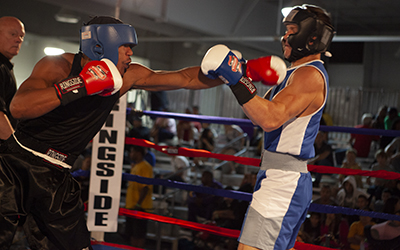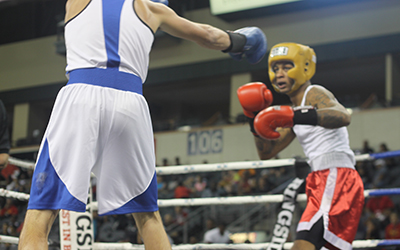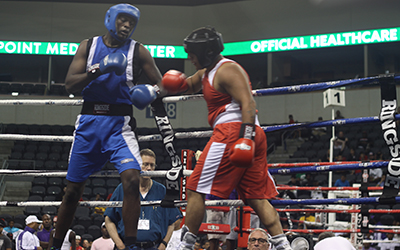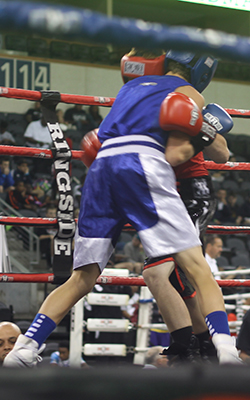The Out-Boxer fighting style can be a true wonder to behold.

A master of this style uses pinpoint jabs to keep their opponent at bay, while slipping, ducking, and stepping out of the way of all incoming punches. It is graceful and highly technical.
But not just anyone can utilize this style effectively in the ring.
In our latest Focus on Fighting Styles, we will look more closely at the Out-Boxer style of fighting.
Unlike the swarmer style, which almost boxer can learn, the Out-Boxer style is limited to taller fighters. The style works most effectively when a fighter has the reach advantage over their opponent.
The Out-Boxer also needs to have great stamina, superior footwork, and a solid command of how to move around the ring.
Let’s take a closer look at the style, to understand why these components are so essential.
The Out-Boxer Style: What it Looks Like
The Out-Boxer will try to maintain distance. They want to fight at longer ranges, preferably ranges where they can land punches but their opponent cannot.

An Out-Boxer has two primary means of managing position. The first uses agility and maneuverability to shift away from an opponent. The fighter will constantly slip, dodge, and sidestep away, forcing an opponent to chase after. This tactic will tend to wear an opponent out and leave them open to counters.
The second method emphasizes the use of the jab and cross to push an opponent back or keep them from getting too close. These straight punches maximize the Out-Boxer’s range while punishing anyone who tries to get in close.
You will often see an Out-Boxer relying on both techniques to maintain separation.
In either case, the Out-Boxer relies on accurately thrown straight punches to the head and body as their main offensive output. Other, more powerful punches, like the hook or uppercut, would require the Out-Boxer to close in, eliminating their reach advantage. For this reason, Out-Boxers tend to have few knockouts on their record. They win most fights by decision.
The Out-Boxer Fighter: Why Fighters Choose It
Taller boxers will almost always be out-muscled by shorter opponents in the same weight class. This is just a function of physiology. For any given weight, a shorter boxer can give over more of their mass to musculature. This means that a tall boxer will, more often than not, lose if they get into a situation where they merely trade punches with an opponent.

In order to overcome this strength imbalance, many taller boxers choose to keep their opponents at a distance. They trade their disadvantage in raw power for an advantage in reach.
The out-boxer style is attractive for anyone who wants to deliver a few, well-placed shots and then dance away rather than close to a middle distance and trade blows.
The Out-Boxer Counter: How Should You Defend It
If you find yourself in the ring with an Out-Boxer don’t try to hard to land blows to the head early on. You’re already going to have to work hard to close in. You shouldn’t double your work by trying to also punch up.
Instead, focus on the body, which will also happen to be the easiest part of your opponent’s body to reach (assuming that they are taller than you). Plus, slipping one’s entire torso away from an incoming blow is far harder than just slipping the head.
More importantly, though, body shots hurt. The pain of multiple punches to the core will degrade a fighters ability to use their legs. And an Out-Boxer who can’t use their legs, is in trouble.

Remember to avoid the clinch. If you manage to corner your opponent, don’t get too aggressive and enter into grappling range. A taller boxer has the advantage in the clinch, because they can wrap you up and force you to carry their weight.
Medium range will be your friend. You know you are in medium range when you are close enough to land your punches, but not so close that you can get wrapped up. At this range, your punches will have their greatest effect, but your opponent will have a hard time being effective with their jabs and crosses.
Getting INTO medium range, may be easier said than done. But when you achieve it, unload before your opponent dances away again.


excellent.
Advice taken from the legend referee…… Mills Lane….. was to never think you know everything about boxing . He told us there is always a new situation, a new technique, or a new challenge on the horizon.
Completely agree. This article doesn’t come close to covering every potential aspect of the Out-Boxer. It’s meant as a starting point, not the last word.